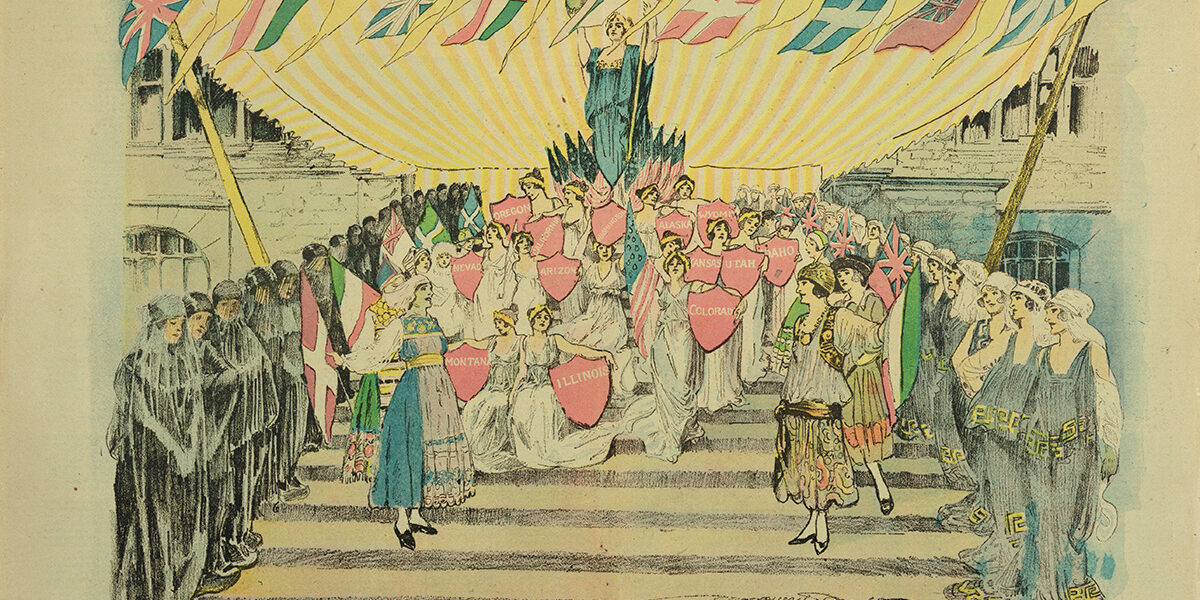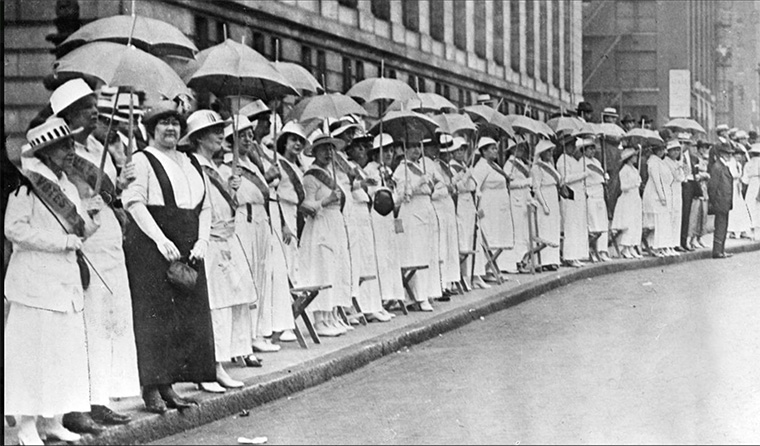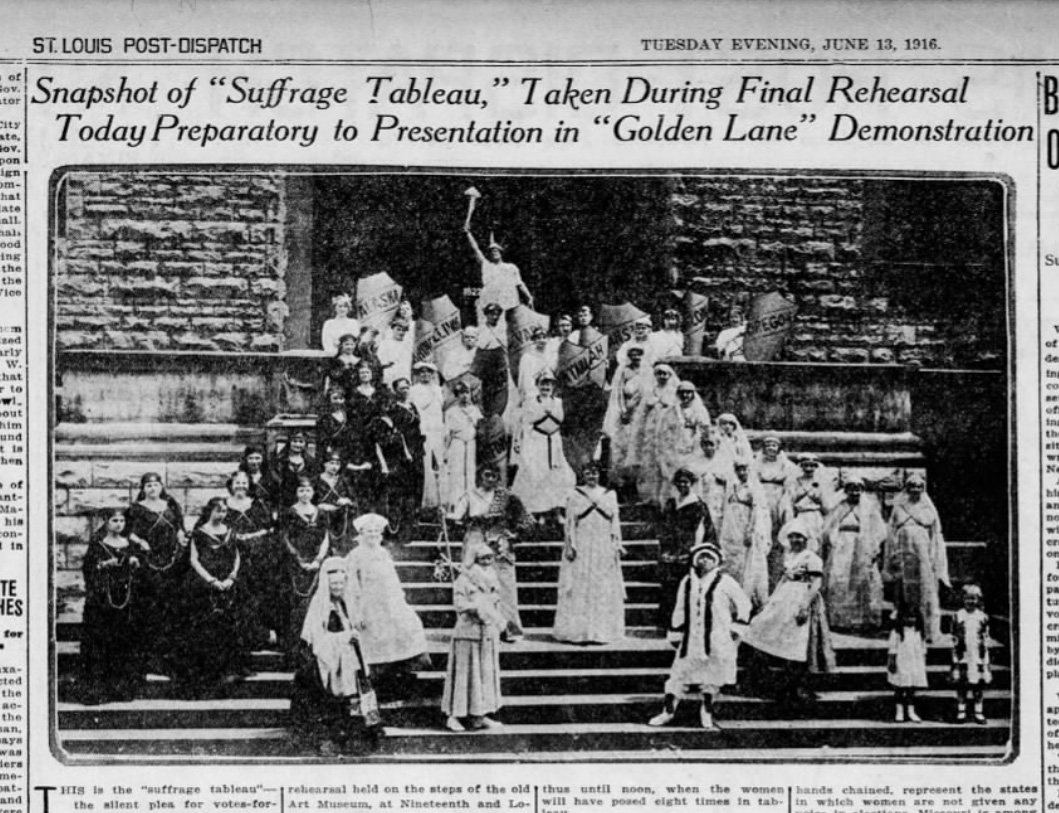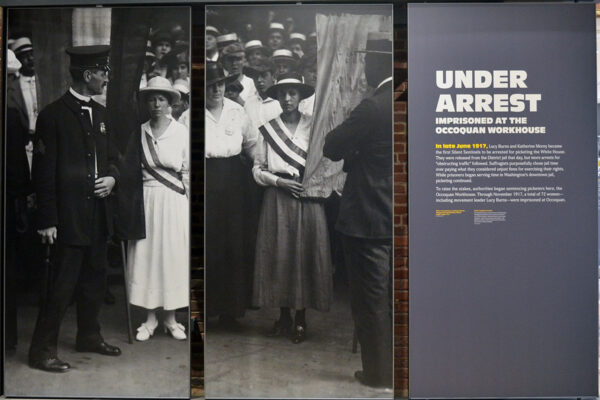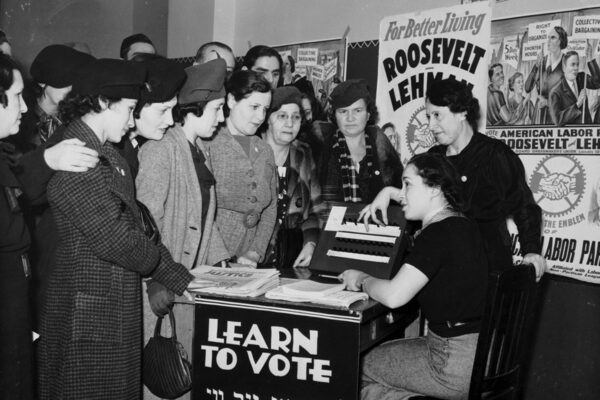As you enter the low-lit room, 250 photos of unidentified women greet you. The black-and-white prints, made uniform in size, include Easterly daguerreotypes from the 1840s, images of women brought to the area from across the globe for the St. Louis World’s Fair in 1904, and others up to the 1920s.
The women’s names are unknown and their stories have long been forgotten, but it makes their presence no less compelling. And they’re an apt metaphor for the many unknown women who worked hard — across the nation and, for this purpose, St. Louis — over many decades to help secure the right to vote for women.
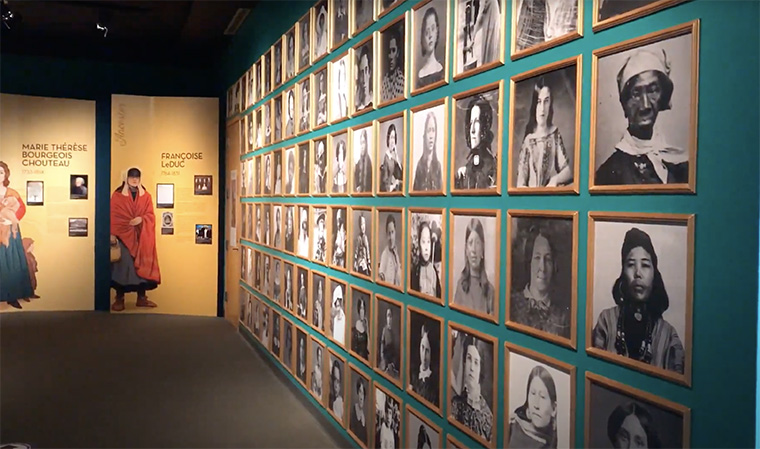
The images, from the Missouri Historical Society archives, are situated at the entrance of the exhibit, Beyond the Ballot: St. Louis and Suffrage, at the Missouri History Museum. Running through March 20, 2022, the exhibit celebrates St. Louis women and their contributions to the suffrage movement.
“As I was developing the exhibit, this was my audience. These are the women I’m trying to give a voice to…”
—Katie Moon
“As I was developing the exhibit, this was my audience,” says Katie Moon, exhibits manager. “These are the women I’m trying to give a voice to — and what we were fighting for and who we were fighting for. And they might have been involved in the suffrage movement, but we don’t know.”
Beyond the Ballot is split into two sections: one side providing contextual information and the other, the suffrage story.
“We wanted to tell the story of what women were doing before 1920, the contributions women were making, to provide more context,” Moon says. “This is all local history.”
Among the 32 women highlighted in the first section are Marie Therese Bourgeois Chouteau, the matriarch of the Chouteau fur-trading family and who’s considered the “Mother of St. Louis,” and Annie Turnbo Malone, an African American entrepreneur who became one of the richest women in the world. There’s also a doctor, a union organizer, a nun.

A few of the women showcased were directly or indirectly affiliated with Washington University, including Anna Brackett, who was the first female principal of a secondary school in the United States (St. Louis Normal School, now Harris-Stowe State College). Brackett was the domestic partner of Ida M. Eliot, also an educator and the niece of William Greenleaf Eliot, one of the founders and first president of Washington University. Adaline W. Couzins, who was a British-born American civil servant and a Civil War nurse, was the mother of Phoebe Couzins, who in 1871 was the first female law graduate of Washington University and the first female appointed U.S. Marshal. Both Phoebe and Adaline were well-known St. Louis suffragists and trailblazers for women’s rights and equality.
Fanny Woodward served as board president of the first “day nursery” or child-care center west of the Mississippi, the South Side Day Nursery, which opened in 1886 to care for children of poor women who had to work. She was married to Calvin M. Woodward, who served as a professor of mathematics and applied mechanics, a dean of Washington University’s polytechnic school, and founder and director of the university’s Manual Training School.
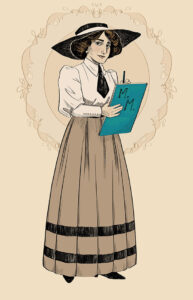
Then there is Marguerite Martyn, a graduate of the university’s art school. Overlooked today, Martyn has been called “America’s forgotten journalist,” yet her contributions as an artist and reporter are noteworthy and form a bridge to the suffragists.
Martyn, who worked for the St. Louis Post-Dispatch from 1905 to 1939, chronicled — through sketches and written stories — the women’s suffrage movement in St. Louis. During a time when newspapers included few bylines, Martin’s could be seen frequently.
Throughout her long career, she drew and interviewed educators and actresses, politicians and poets, dancers and opera singers, labor organizers and social reformers, and, of course, suffragists.
One of her sketches showcased in Beyond the Ballot foreshadows an open-air tableau (shown at the top of the page). The scene was the culmination of the “Golden Lane” — a silent demonstration women held along Locust Street on the opening day of the Democratic National Convention in 1916.
“It was the pinnacle of the suffrage movement in St Louis,” Moon says. “On the first day of the Democratic Convention in 1916, the delegates, who were staying at the Jefferson Hotel, had to walk down Locust to get to the Coliseum, which was hosting the convention. Along the route, suffragists organized the Golden Lane, ‘a walkless, talkless parade,’ where women held yellow parasols and wore white dresses with golden sashes bearing the words ‘Votes for Women.’”
It was a silent campaign to persuade delegates to take up women’s right to vote in the party platform. Along the parade route was an assemblage on the steps of the old art museum where leaders of the suffrage movement wore white, gray or black dresses to symbolize the states allowing full voting rights, partial rights or none at all.
“There’s a photo of women standing in front of the fine arts building at 19th and Locust streets (formerly the St. Louis School and Museum of Fine Arts, an independent entity of WashU), and Martyn had drawn the scene the weekend before it happened,” Moon says. Martyn’s original drawing had appeared in the Post-Dispatch’s Sunday Magazine, June 11, 1916, before the start of the convention. “Then they shot a photo of it, which also appeared in the paper and is in our exhibit.
“How do we not know her? Martyn was really the journalist who covered suffrage … in a way that nobody else did.”
—Katie Moon
“How do we not know her?” Moon asks. “Martyn was really the journalist who covered suffrage, and even women’s culture and the changing mores, in a way that nobody else did.”
Navigating the rest of the exhibit and learning about key St. Louis suffragists — Virginia Minor, who was the plaintiff in the 1874 U.S. Supreme Court case Minor v. Happersett where she argued unsuccessfully that the 14th Amendment gave women the right to vote; Edna Gellhorn, who was a co-founder of the League of Women Voters (her father was a professor of clinical medicine at Washington University); and others — one could ask the same question: “How do we not know her?”
In Beyond the Ballot, Moon and her colleagues at the Missouri History Museum hope to change that.
